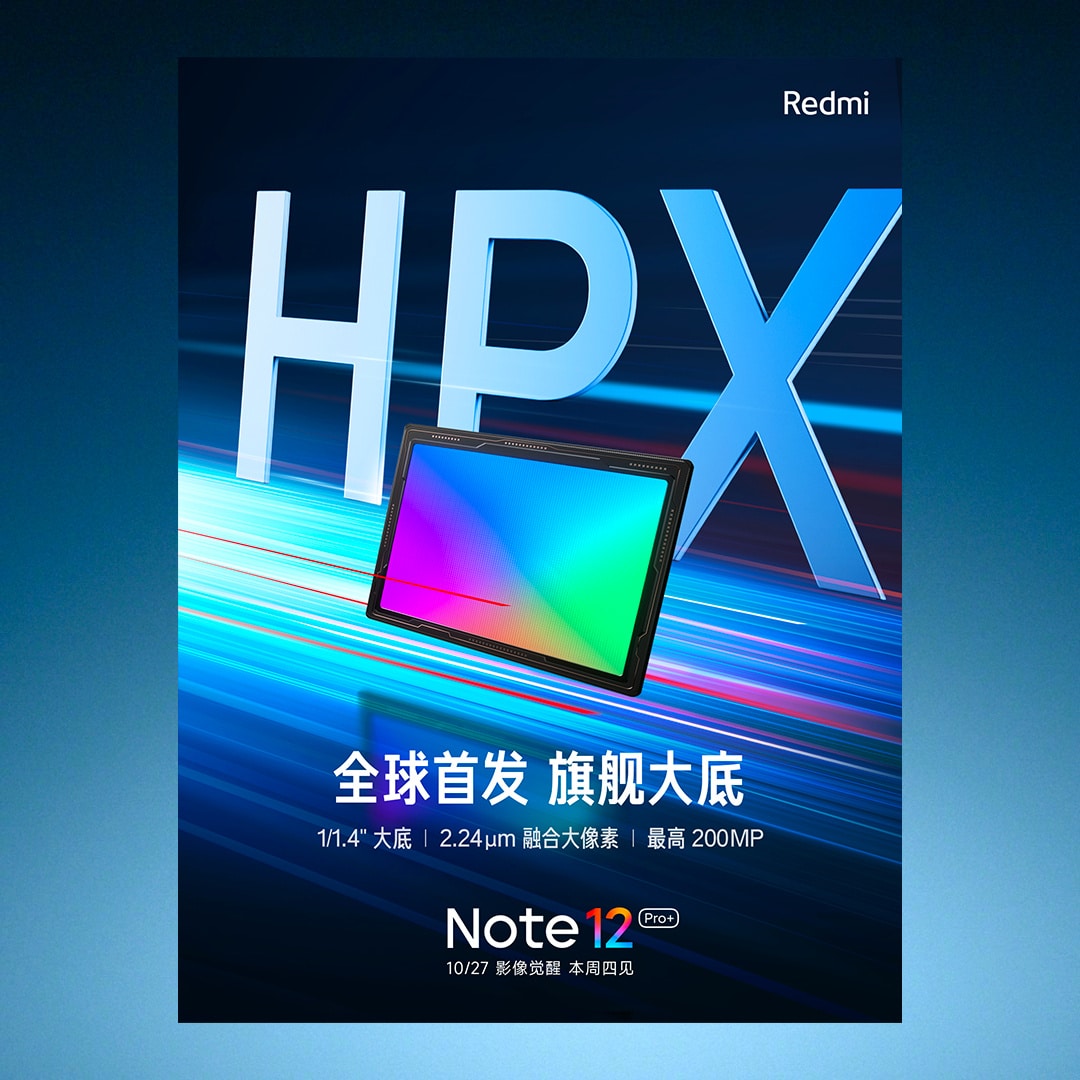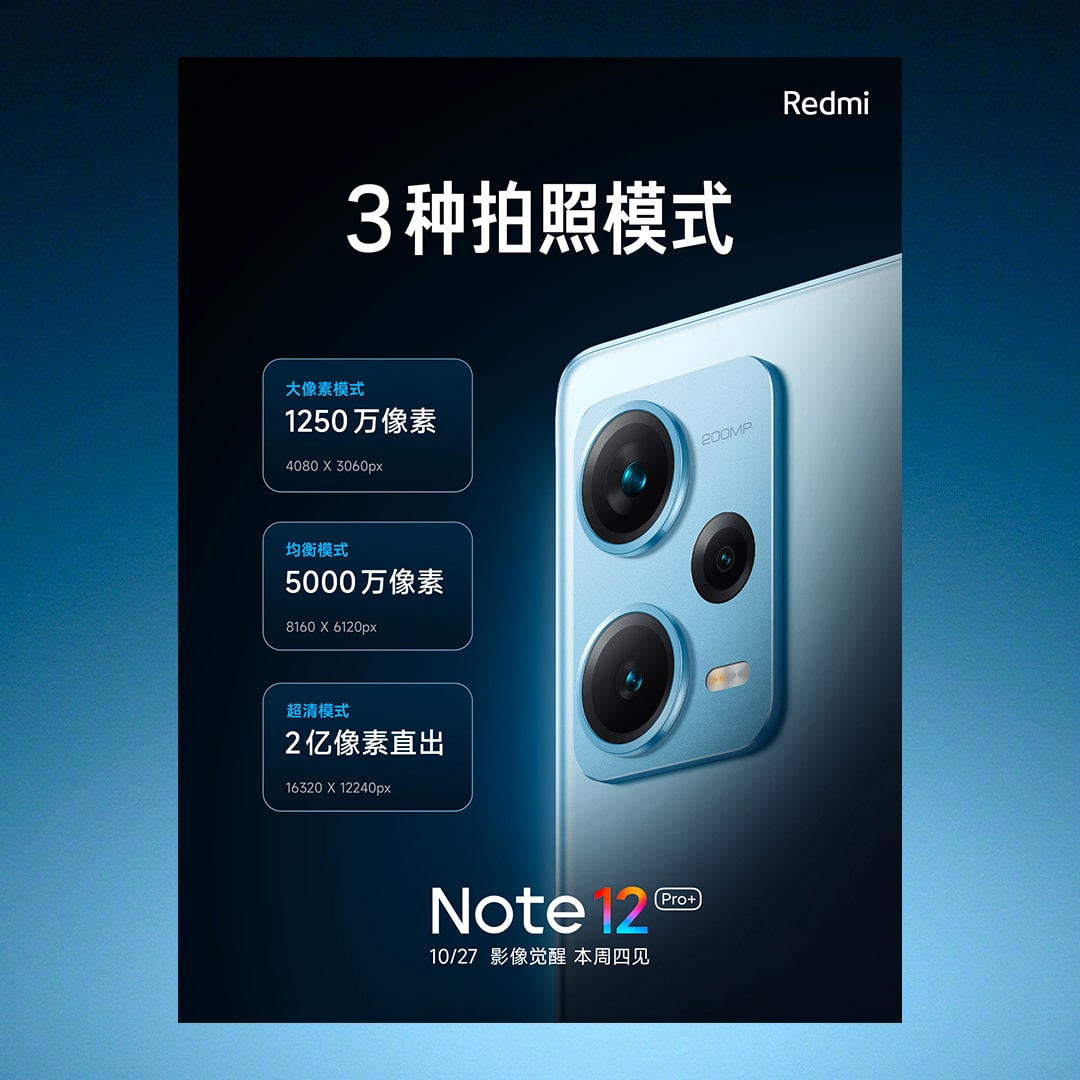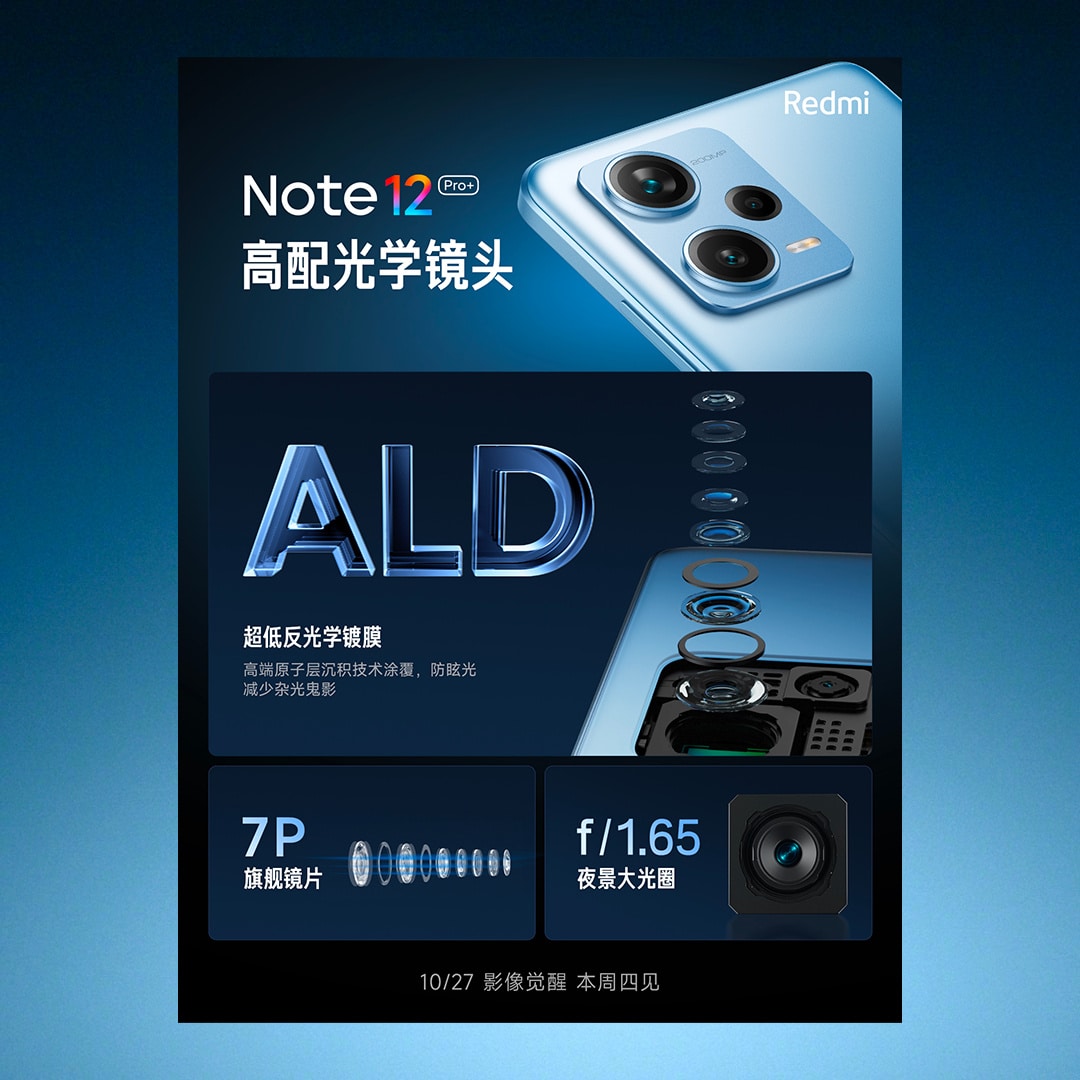The Redmi Note 12 Pro+ is the talk of the town. However, this shouldn’t sound surprising or odd because the upcoming Note-line model is going to be a genuine beast. Yes, the Note family still positions as a mid-ranger, but it will inherit many features from high-end models. Today, the company posted a few promo posters, disclosing some amazing features of the upcoming handset.
Samsung HPX parameters
For instance, the Redmi Note 12 Pro+ will debut the Samsung HPX 200-megapixel sensor. The Samsung HPX sensor has a 1/1.4″ outsole, and the area is 24% larger than the Sony IMX766. The multi-pixel integration technology supports 16-in-1 to 2.24μm fusion large pixels.
In terms of color reproduction, the Samsung HPX sensor adopts the new DTI technology to improve the color reproduction ability while reducing pixel crosstalk. ISOCELL 3.0 introduces a new color filter material to improve the signal-to-noise ratio.
More importantly, the sensor supports three shooting modes to meet the different needs of snapshot, detail, and balance. Among them, the 200-megapixel ultra-clear mode gives priority to details and resolution; the 50-megapixel mode has priority to balance; the 12.5-megapixel mode gives priority to speed and purity.
The sensor supports innovative ISO Pro technology and triple ISO mode (low, medium, high mode), allowing the sensor to display more than 4 trillion colors (14-bit color depth). Also, it comes with single-frame progressive HDR (Staggered HDR) and supports 8K 30fps and 4K 120fps video shooting.
Redmi Note 12 camera advantages
In addition, the Redmi Note 12 series will also use the Xiaomi Image Brain. It includes four parts: an intent recognition unit, a computing unit, an acceleration engine, and an ecological engine.
As you see, the camera has very powerful hardware and is believed to capture outstanding photos. We understand that for good photos, hardware is not enough. But when there is powerful hardware, the rest is a matter of software.
The Redmi Note 12 Pro+ will use ALD ultra-low reflection optical coating. The latter uses an atomic layer deposition technology to achieve anti-glare and reduce stray light and ghosting effects.
In addition, on the lens, the Redmi Note 12 Pro+ also adopts the 7P flagship structure. So the images should be much clearer.
At the same time, the aperture of the main camera will be increased to f/1.65. Thus, it will increase the amount of light entering. In its turn, it will enhance the imaging effect in dark light environments such as night scenes.
Judging from the officially-released photo samples, the technologies mentioned above have effectively improved the Redmi Note 12 Pro+ imaging quality. It is believed to have a good performance in various environments.
What else
Prior to this, we saw that the handset would be available in at least two colors. From the official teaser, we learned that the main camera uses a 50MP Sony IMX766, with a 1/1.56″ outsole and 2μm fusion large pixels. It also supports OIS (optical image stabilization). But this is the sensor of the Pro version.
As for the latter, the Redmi Note 12 Pro will debut the MediaTek Dimensity 1080 processor. The chip is manufactured by TSMC’s 6nm process and has an octa-core CPU. It includes 2 ARM Cortex-A78 cores with a frequency of 2.6GHz and 6 ARM Cortex-A55 cores with a frequency of 2GHz.
The 3C certification listing shows that Xiaomi Redmi Note 12 will support 67W charging, while the Redmi Note 12 Pro and Redmi Note 12 Pro+ will support 120W and 210W fast charging solutions, respectively.





